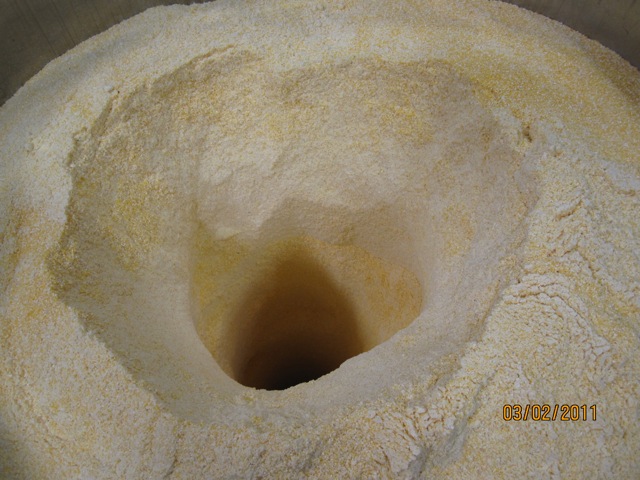
Many food products reach the consumer in powdered or granular form, and even more involve processing of this form of material, which we call a bulk solid, at some point in their manufacture. These materials don’t always behave well in a manufacturing process, often finding their way to the root of problems that result in process downtime, product quality issues, excessive manpower or rework and reduced system capacity. It is not uncommon for an otherwise viable new product to be abandoned when it becomes economically impractical to manufacture as a result of solids handling problems.
Commonly occurring solids handling problems in food manufacturing processes can include segregation of blended ingredients, flow interruptions or limitations, caking during storage or within packages, and loss of inventory control (and sometimes spoilage) in storage silos, to name a few. These problems are often the result of equipment or system design that is based on a misunderstanding of how bulk solids behave. Although the fundamentals of solids flow theory were established by Dr. Jenike in the 50’s, difficulties are still frequently encountered when processing powdered food products and ingredients. Perhaps this is somewhat the result of the fact that the science behind solids flow typically isn’t taught in food science or engineering curricula.
All too often, solids storage vessels are designed based on the application of familiar methods. Many times, what is familiar to the engineer is liquid storage, and since surge bins, hoppers and silos look something like liquid tanks, the misapplication of these design approaches often occurs. For a liquid to drain reliably from a tank only requires that an outlet be placed at the low point and sized sufficiently large enough to provide the required discharge rate.
If you contemplate a flat-bottomed vessel with a hole in the bottom, it’s pretty easy to see that unlike liquid, most powders wouldn’t empty completely. If a harder to handle material, like brown sugar, or cocoa powder were placed in the vessel, other problems, such as arching or ratholing, would likely occur. The fine nature of some food products may also result in restricted discharge rates, or even flooding if the powder becomes aerated. Not to mention that if a blended product is placed in the silo, mechanisms may be at work that cause the blend uniformity to degrade as the silo is filled or as it is discharged.
The good news is that vessels can be designed to reliably handle most bulk solids, even the difficult ones, and the approach is proven, reliable and based on material properties that are measured using ASTM test methods. Jenike & Johanson, Inc. provides a wide range of testing and engineering services to help you ensure that your new process operates reliably. If you have an existing process that is creating problems, we can help you correct the root cause of the problem, using proven methodologies. Our engineers are available to discuss your process or solids handling problems without obligation and we’re eager to apply our understanding of solids flow to your process challenges.



